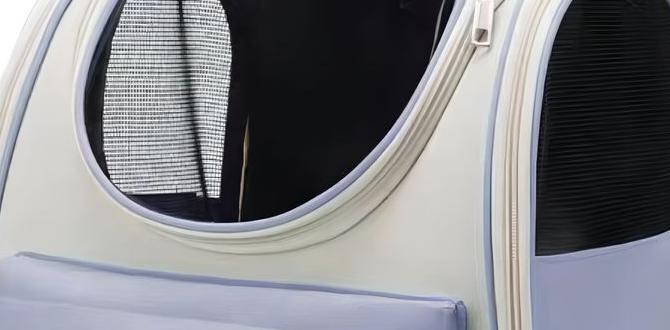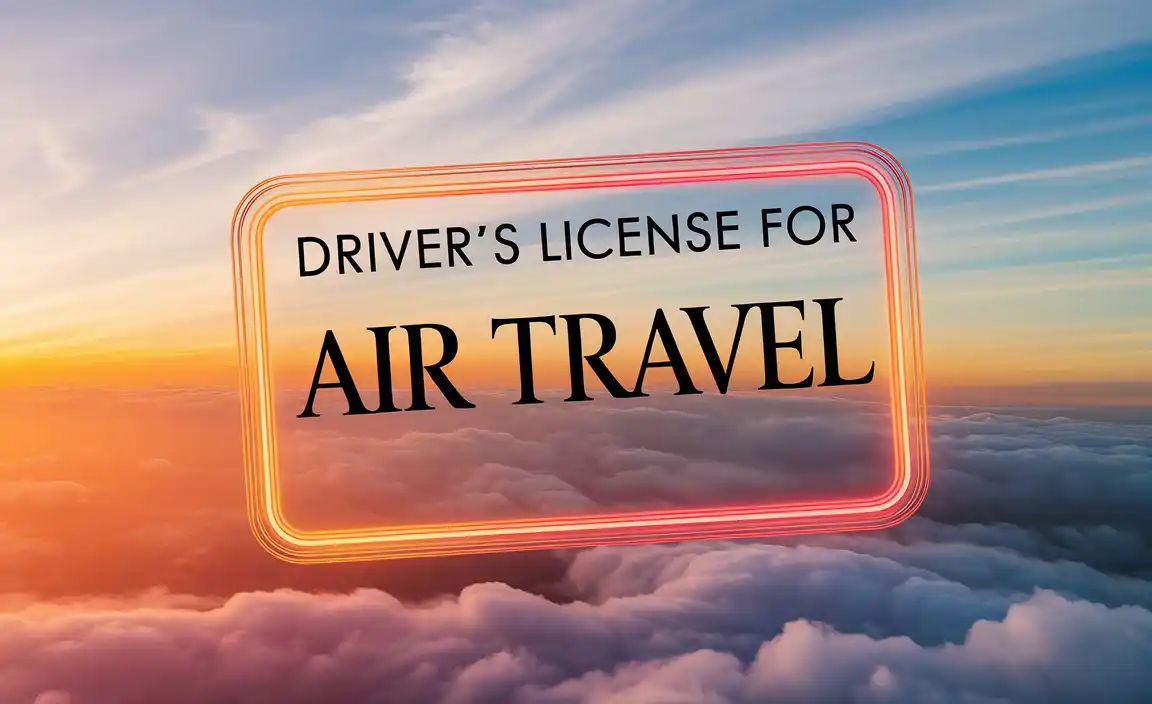Yes, the Azores are an accessible travel destination for many with careful planning. This guide offers essential tips and resources for a comfortable and enjoyable trip, covering transportation, accommodation, activities, and essential travel considerations for a stress-free vacation.
Planning a trip to a new place can feel a bit overwhelming, especially when you need to consider accessibility. The Azores, a stunning archipelago in the mid-Atlantic, offers breathtaking landscapes and unique cultural experiences. While it’s a dream destination for many, some wonder if it’s truly welcoming for all travelers. You might be concerned about getting around, where to stay, or if your favorite activities will be enjoyable. Don’t worry! This guide is designed to be your essential companion, simplifying the process and showing you how to experience the magic of the Azores with confidence and ease. We’ll break down everything you need to know, step by step.
Discovering the Azores: A Beginner’s Guide to Accessible Travel
Welcome to the Azores! This collection of nine volcanic islands is a paradise of lush green landscapes, pristine coastlines, and charming villages. It’s a place where you can hike through volcanic craters, soak in natural thermal pools, and savor delicious local cuisine. For travelers seeking adventure and relaxation, the Azores offer a unique blend of natural beauty and Portuguese culture. Our goal here at Journey Essentials is to ensure that everyone, regardless of their mobility needs, can experience the joy of travel. This guide is crafted to specifically address the needs of accessible travel in the Azores, making your planning smooth and your journey memorable.
Why Accessible Travel Matters in the Azores
The Azores are increasingly recognized for their natural beauty, but realizing their full potential for all visitors requires understanding and addressing accessibility. Many travelers have specific needs related to mobility, sensory experiences, or dietary requirements that can impact their travel choices. The good news is that the Azores are making strides in becoming more inclusive. By providing clear information, we empower you to make informed decisions and have a fantastic trip. This guide will walk you through the key aspects of accessible travel on these enchanting islands.
Getting Around the Azores: Your Transportation Options
Navigating between and within the islands is a crucial part of any trip. In the Azores, several transportation methods can accommodate varying needs. Understanding these options will help you plan your itinerary effectively.
Inter-Island Travel: Flights and Ferries
The Azores consist of nine islands, and getting between them is part of the adventure. SATA Air Açores provides inter-island flights, often the quickest way to travel between more distant islands. For closer islands, the ferry service operated by companies like Atlanticoline is a viable and scenic option. It’s important to research the accessibility of specific airports and ferry terminals beforehand.
- SATA Air Açores: Often accommodating for passengers with reduced mobility on their aircraft. It’s recommended to contact them in advance to discuss your specific needs and any assistance required during boarding and disembarking.
- Atlanticoline Ferries: Many modern ferries have accessible routes and facilities, including dedicated spaces for wheelchairs and accessible restrooms. Always check the specific ferry route and vessel details when booking.
Booking flights and ferry tickets well in advance is highly recommended, especially during peak season. Allowing extra time at airports and ferry terminals can reduce stress.
On-Island Transportation: Cars, Taxis, and Public Transport
Once you arrive on an island, how you get around depends on your chosen island and your mobility needs. Car rental is popular, and some companies offer adapted vehicles. Taxis are also available, and it’s wise to inquire about larger vehicles or wheelchair-accessible taxis in advance.
- Car Rentals: Several car rental agencies operate on the larger islands like São Miguel and Terceira. While not all offer adapted vehicles, it’s worth inquiring directly with companies or through a specialized accessible travel agency. Driving yourself offers the most flexibility for exploring at your own pace.
- Taxis: Taxis are generally available in larger towns and cities. For specific needs, pre-booking a taxi that can accommodate a wheelchair or has extra space is advisable.
- Public Transport: Bus services exist on some of the larger islands, particularly in urban areas. The accessibility of buses can vary, so checking local bus company websites or contacting tourist information centers for current information is recommended.
For those who find traditional car rental challenging, consider private accessible transfer services. These can be booked in advance and offer a door-to-door solution, ensuring a comfortable journey from your accommodation to your chosen attractions.
Navigating Cities and Towns
Most towns and villages have sidewalks, but their condition can vary. Cobblestone streets are common, especially in historic centers, which can present challenges for wheelchair users or those with balance issues. Pacing yourself and planning routes through flatter areas can make exploration more enjoyable.
Accessible Accommodation in the Azores
Finding the right place to stay is fundamental to a comfortable trip. The Azores offer a range of accommodations, from hotels to holiday homes, and an increasing number are catering to accessible travel needs.
Hotels with Accessibility Features
Many hotels, particularly larger ones in popular tourist areas like Ponta Delgada (São Miguel) or Angra do Heroísmo (Terceira), are beginning to offer rooms with enhanced accessibility. These often include features like:
- Wider doorways
- Roll-in showers
- Grab bars in bathrooms
- Lowered countertops
- Accessible pathways within the hotel
When booking, it is always best to contact the hotel directly to confirm the specific accessibility features of a room and the hotel’s common areas. Websites like Visit Azores, the official tourism portal, can sometimes highlight accessible facilities, or you can use specialized accessible travel booking platforms.
Vacation Rentals and Apartments
Renting an apartment or house can offer more space and the convenience of a kitchen. Some rental platforms allow you to filter for accessibility features. Look for listings that specifically mention features like ground-floor access, ramps, or adapted bathrooms.
When considering a vacation rental, pay close attention to:
- Entrance: Is it step-free or ramped?
- Bathroom: Are there grab bars or a level-access shower?
- Layout: Are the main living areas and bedroom accessible?
Messaging the host directly to ask detailed questions about accessibility is crucial for a smooth stay.
Considering Location
The location of your accommodation can significantly impact your experience. Staying in or near town centers often means closer proximity to restaurants, shops, and transport links, potentially reducing the need for extensive travel once you’re settled. However, some travelers might prefer a quieter, more secluded location. Weigh the pros and cons based on your personal needs and the island you are visiting.
Accessible Activities and Attractions in the Azores
The Azores are renowned for their natural wonders. Many of these can be experienced with adjustments and planning, ensuring everyone can partake in the island’s beauty.
São Miguel: The Green Island
As the largest island, São Miguel offers a variety of accessible attractions.
- Sete Cidades: While the viewpoints at the crater rim are accessible by car, exploring the village below can involve some uneven terrain. Accessible viewpoints offer stunning vistas of the twin lakes.
- Furnas Valley: The geothermal activity is a major draw. The Terra Nostra Garden has accessible paths and a warm thermal water pool that many can enjoy. The village itself is relatively flat for exploration.
- Ponta Delgada: The capital city has accessible sidewalks, and many shops and restaurants in the main areas are reachable. The marina area is largely flat and pleasant for a stroll.
When visiting natural parks, always check the official park websites for any accessibility updates or specific trail information. For example, the Parque Natural da Ribeira dos Caldeirões on São Miguel has some accessible viewing areas for its waterfalls.
Terceira: The Lilac Island
Terceira boasts a rich history and vibrant culture.
- Angra do Heroísmo: A UNESCO World Heritage city, Angra has a historic center with cobblestone streets, but many main streets and attractions are navigable with care. The outer harbor area is quite flat.
- Biscoitos Natural Pools: These lava rock pools are a unique experience. While access to the pools themselves can be challenging, the surrounding promenade offers good views and easier access to some areas.
Other Islands
While larger islands offer more established accessible infrastructure, smaller islands like Faial, Pico, or São Jorge still have accessible points of interest. The port towns are generally flatter and easier to navigate. Always consult local information centers for the most up-to-date accessibility details.
Essential Packing for a Comfortable Azores Trip
Packing smart is key to a stress-free travel experience. For the Azores, consider essentials that cater to comfort and specific needs.
Clothing and Footwear
The Azores weather can be unpredictable, with four seasons in one day being a common saying. Layering is essential.
- Waterproof and Windproof Outerwear: A good quality jacket is a must.
- Comfortable Walking Shoes: Even if you use a wheelchair, comfortable footwear for companions and for any walking you do is important. Consider shoes with good grip for potentially damp surfaces.
- Lightweight Layers: T-shirts, long-sleeved tops, and sweaters.
- Sun Protection: Hat, sunglasses, and high-SPF sunscreen, even on cloudy days.
Mobility Aids and Adaptations
If you use specific mobility aids, ensure they are well-maintained and ready for travel. Consider:
- Lightweight Wheelchair or Mobility Scooter: If using a portable aid, ensure it’s easy to transport.
- Seat Cushioning: For added comfort on transport or during activities.
- Portable Ramp: For navigating small steps if needed.
Personal Care Items
For some travelers, managing personal care needs discreetly and comfortably is paramount. Having reliable products can significantly reduce stress.
- Adult Diapers/Incontinence Products: Choose products that offer discretion, comfort, and high absorbency for extended periods, especially during travel days or long excursions. Brands offering advanced odor control and a secure fit are ideal. Researching travel-sized or discreet packaging options can be helpful.
- Child Diapers: For families traveling with young children, having a sufficient supply of reliable and comfortable diapers is essential. Look for options that are gentle on sensitive skin and provide leak protection for peace of mind during flights and daily adventures.
- Medications: Pack all necessary prescription and over-the-counter medications in their original packaging, along with a copy of your prescriptions.
It’s always a good idea to pack more than you think you might need for personal care items, as availability and specific brands may vary in the Azores.
Planning Your Accessible Azores Itinerary: Tips and Resources
Creating an itinerary that balances adventure with accessibility requires thoughtful planning. Here are some tips and how to use resources to your advantage.
Research is Key
Start your research early. The more you know, the more confident you’ll feel.
- Official Tourism Websites: Visit Azores is an excellent starting point for general information.
- Accessible Travel Blogs and Forums: Search for blogs written by travelers with similar needs. They often share invaluable firsthand experiences and tips.
- Specialized Travel Agencies: Consider using agencies that focus on accessible travel. They have extensive knowledge of destinations and can make tailored bookings.
Pace Yourself
Don’t try to cram too much into one day. The beauty of the Azores is also in slowing down and savoring the experience. Plan for rest periods and be flexible with your schedule.
Communicate Your Needs
Don’t hesitate to communicate your specific accessibility requirements to hotels, tour operators, and transportation providers when booking. Clear communication upfront can prevent issues on arrival.
Consider Guided Tours
Many tour operators offer private tours. This allows you to customize the experience to your mobility needs and pace. Inquire if they can accommodate specific requirements, such as wheelchair accessibility or shorter durations.
Sample Accessible Travel Itinerary Snippet (São Miguel)
This is a simplified example to illustrate how an accessible itinerary might look on São Miguel, focusing on key highlights manageable for many travelers. Remember to adapt this based on your personal needs and mobility.
Day 1: Arrival in Ponta Delgada
- Arrive at Ponta Delgada Airport (PDL). Arrange for accessible transfer to your hotel.
- Check into your accessible accommodation.
- Explore Ponta Delgada: Enjoy a stroll along the flat marina promenade. Visit accessible shops and cafes in the city center.
Day 2: Furnas Valley Exploration
- Arrange for accessible transport.
- Visit Terra Nostra Garden: Enjoy the accessible paths and the thermal pool (check water temperature and immersion guidelines).
- Observe the ‘caldeiras’ (hot springs) from accessible viewing points in Furnas village.
Day 3: Sete Cidades Views
- Travel by accessible vehicle to viewpoints overlooking Sete Cidades crater lakes, such as Vista do Rei.
- If accessible, descend to the village of Sete Cidades for a different perspective (assess terrain carefully).
This snippet highlights how to integrate accessible transport and attractions. Always research the specific accessibility of each site before visiting.
Navigating Challenges: Practical Advice
While the Azores are welcoming, encountering challenges is part of travel. Here’s how to navigate them smoothly.
Cobblestone Streets and Uneven Terrain
Many historic centers feature cobblestones. If you use a manual wheelchair, consider a power assist device or a more robust wheelchair. For walkers or canes, ensure footwear has excellent grip. Take your time, and don’t be afraid to ask for assistance if needed.
Incline and Slopes
Some islands have steep volcanic topography. Plan routes that minimize steep inclines, or use local transport for more challenging areas. Accessible transport services can be invaluable here.
Language Barriers
While English is spoken in tourist areas, learning a few basic Portuguese phrases can be incredibly helpful and appreciated. Google Translate or similar apps can be a lifesaver for communicating specific needs.
Emergency Preparedness
Know local emergency numbers. In the European Union, the universal emergency number is 112. Familiarize yourself with the location of the nearest medical facilities to your accommodation.
Table: Comparing Accessibility of Major Islands (General Overview)
This table provides a general overview and should be used as a starting point for your individual research. Accessibility can vary greatly within each island.
| Island | General Accessibility Notes | Key Accessible Attractions (Examples) | Transportation Considerations |
|---|---|---|---|
| São Miguel | Largest island, most developed infrastructure. Good range of accessible accommodations and tours. | Terra Nostra Garden, Ponta Delgada Marina, accessible viewpoints at Sete Cidades. | Car rental with potential for adapted vehicles, accessible transfers, some accessible bus routes. |
| Terceira | Historic sites, good for exploring culture. Angra do Heroísmo has some accessibility challenges due to cobblestones. | Angra do Heroísmo (flat areas around harbor), Biscoitos promenade. | Car rental, taxi services, inter-island ferry with accessible facilities. |
| Faial | Horta is the main hub, relatively flat. | Horta marina, city center promenade. | Car rental, inter-island transport. |
| Pico | Known for mountains and vineyards. Terrain can be challenging. | Vineyard landscapes (from accessible vantage points), some coastal areas in towns. | Requires careful planning for transport, potentially private accessible tours. |
| Smaller Islands (e.g., Flores, Corvo) | More remote, natural beauty is paramount. Infrastructure is limited. | Focus on accessible viewpoints accessible by car, exploring main villages. | Best explored with a pre-booked accessible tour or by focusing on car-based exploration of viewpoints. |
Frequently Asked Questions About Azores Accessible Travel
Is it easy to travel as a wheelchair user in the Azores?
It’s possible to travel as a wheelchair user in the Azores with careful planning. São Miguel and Terceira offer more accessible options for accommodation and attractions. Researching specific sites, booking accessible transport, and communicating your needs in advance are crucial for a smooth experience.







